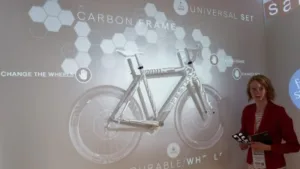3M was showing its latest ultrafine metal mesh-based PCap touch technology which is capable of supporting up to 80 touches, although we heard that there is a development to create a lower cost version that supports just 20 touches as that is enough for most applications. The technology was being shown on a curved LCD monitors and the company was keen to emphasise that complete curved monitors are available from 3M as well as the touch materials and sensors.
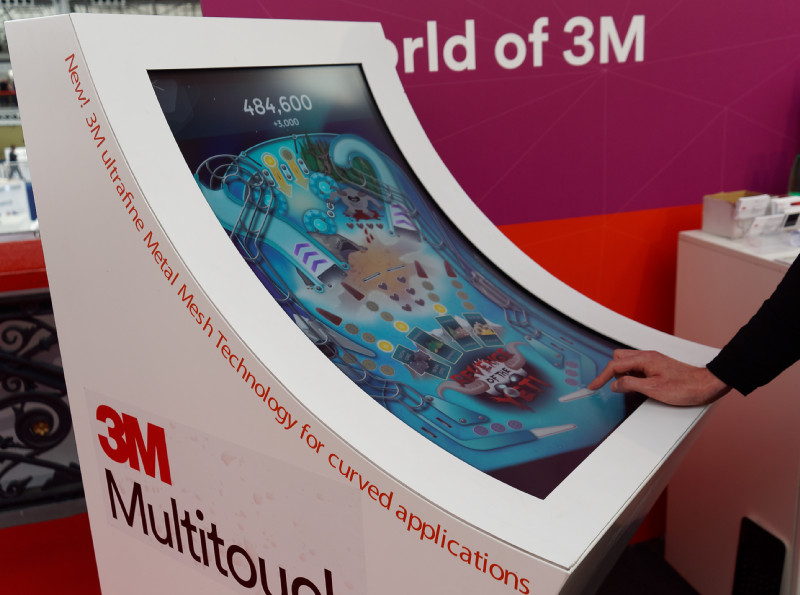 3M’s ultrafine metal mesh sensor is use on this curved touch monitor. Image:Meko
3M’s ultrafine metal mesh sensor is use on this curved touch monitor. Image:Meko
DigiLED was showing how its LED modules could be configured to fit corner installations, with corners mitred to allow use where column cladding is required. The tiles are 43mm deep and are available in 1.9mm, 2,6mm, 3.1mm and 3.9mm pitch with luminance of 1,000 cd/m².
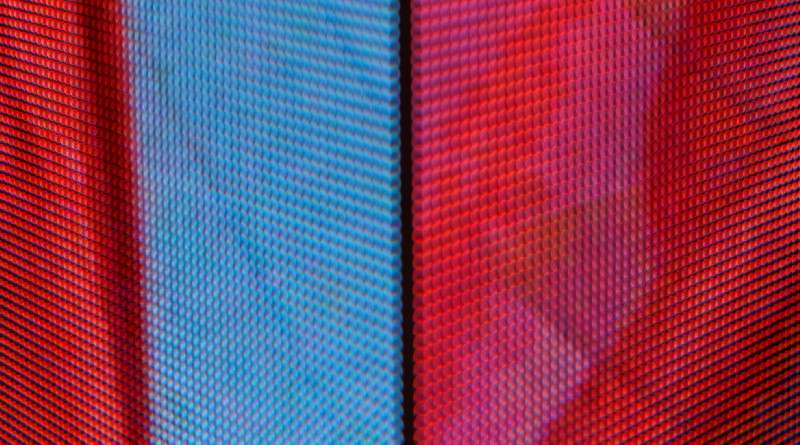 Digiled can make outside corners with its LED system. Image:Meko
Digiled can make outside corners with its LED system. Image:Meko
However, the company told us that it is doing particularly well with the semi-transparent LED system that it has developed for use in shop windows. The system is able to produce 6,000 cd/m² of output. The system is optically suitable for outdoor use, but is not waterproofed, so it can just be used in windows. The company told us that it has worked hard to ensure CE compliance and said that is in contrast with a lot of the Chinese systems that are coming into the market, a topic recently raised by Watchfire in the US. (Watchfire Raises FCC Issues of LED)
Exceptional 3D of Florida, which makes autostereoscopic 3D systems based on the lenticular lens principle, was at the event for the first time. The company has solutions from 10.1″. It told us that its aim is to offer the “maximum ‘Wow’ effect” at a price that’s close to a 2D solution and the company can support displays from 10.1″ to 65″. Industries targeted are retail, hospitality and Transit. As well as the hardware, the company has Zslice 3D software and an API intended to make support simple. (We thought that there was a good sense of depth in the demos, but found the artefacts very off-putting – but then, we may not be typical display viewers. Man. Ed.) The firm has resellers in 50 countries.
Hitachi was showing a new projection lens converter that is for portrait orientation imaging. The lens has an extreme lens shift of 50% as well, so the projector can be mounted at the bottom of a portrait configuration, with the projector still in a landscape orientation. Using a transparent screen, that can mean that when the projector is not powered on, it is, effectively, invisible. The lens was being shown on the LPWU3500 LED projector which is an existing product. Hitachi told us that it is very optimistic about the prospects for LED projectors. The company said that one of the key benefits is ‘better colour than 3LCD’ when LED sources are used with DLP.
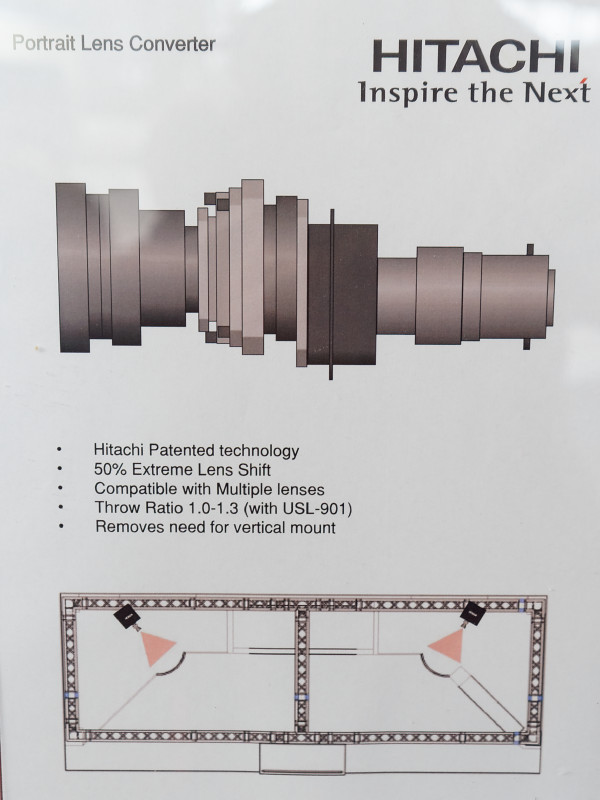
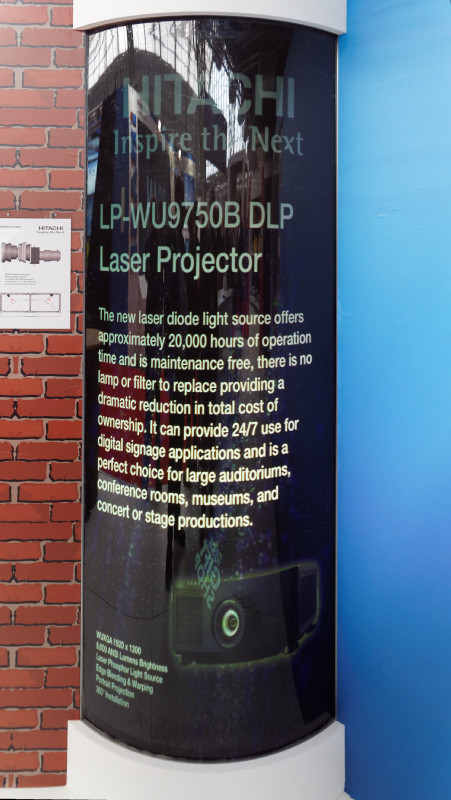
 Hitachi’s Rear projection table looked like wood, but has a projector underneath it. Image:Meko
Hitachi’s Rear projection table looked like wood, but has a projector underneath it. Image:MekoiBase of Taiwan was showing its media players and panel PCs which were being shown with Stino of Germany (which is a subsidiary of Eyevis). Unusual were two ‘stretch’ panel PCs, one a 38″ with 1920 x 540 resolution in a fanless design based on an Intel Pentium processor. The second was a 28″ with 1920 x 360 resolution and 350 cd/m² of output and using an Intel Atom and Intel graphics.
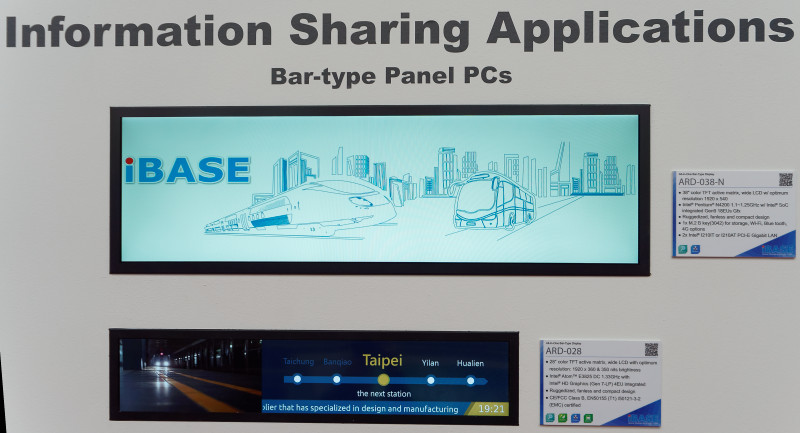 iBase showed ‘Stretch’ Panel PCs. Image:Meko
iBase showed ‘Stretch’ Panel PCs. Image:Meko
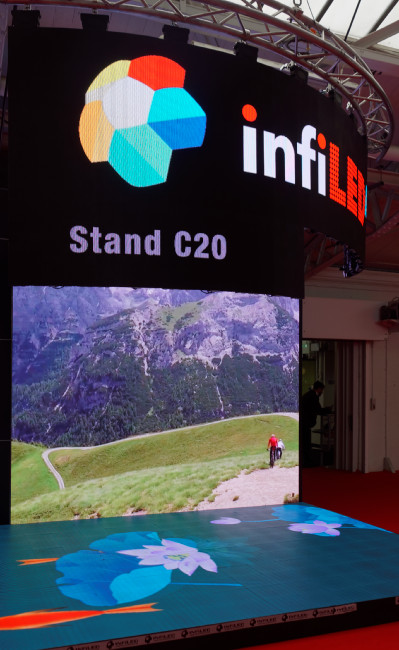 Infiled was showing its LED flooring being used in an interactive system. Image:Meko
Infiled was showing its LED flooring being used in an interactive system. Image:Meko
iBase was also showing a range of media players including the SI-313 UltraHD digital signage player which is based on a 3rd Generation AMD R Series APU (up to 35W) and with an AMD Radeon GPU and support for AMD’s Eyefinity. There are three HDMI 2.0 outputs with hardware EDID emulation.
InfilLED was at the show to demonstrate its LED displays including an interactive floor LED system. However, there were no new products since we saw the company at ProLight & Sound in Frankfurt.
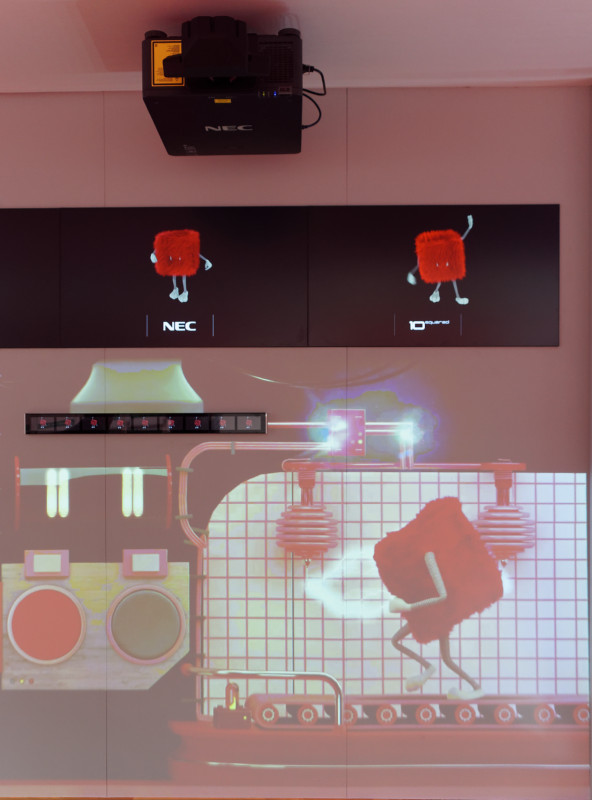 NEC showed mapping of projection with digital signage. Image:Meko
NEC showed mapping of projection with digital signage. Image:Meko
Lancom of Germany, a leader in Wi-fi for retail, was at the show with its ESLs and meeting room displays. An item of news was that the company’s latest systems can now support 802.11 ac. Although this is not needed for ESLs, the company told us it was good to keep up with the standards.
Lumitrix is from the Czech Republic and was showing its projection mapping system which is intended to make mapping simpler. The system consists of a control unit and camera that can be mounted with the projector to create a simple and self-contained system that both allows the alignment of the mapped image but also recognises gestures. The company was showing how the system could be used in a cycle configurator. The system is also designed to allow connection to social media so that consumers can tweet or post to the image.
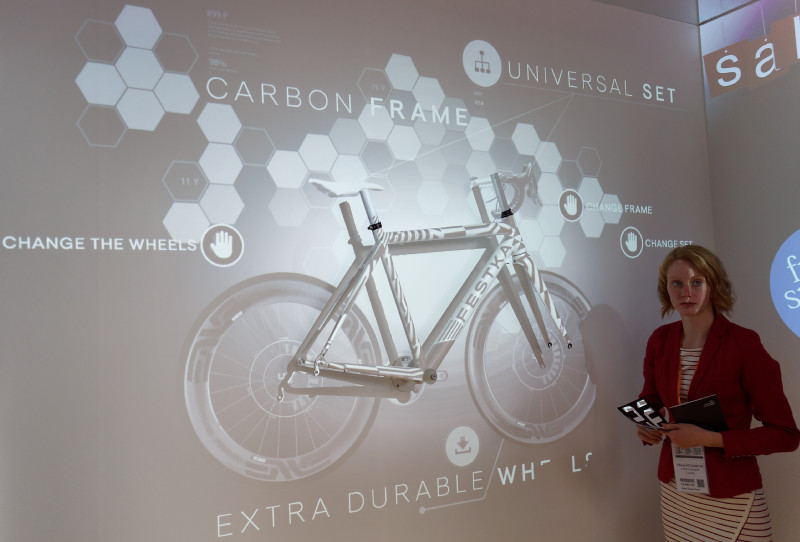 Lumitrix showed mapping in a bike configurator – it was easy to see how this could be used for up-selling! Image:Meko
Lumitrix showed mapping in a bike configurator – it was easy to see how this could be used for up-selling! Image:Meko
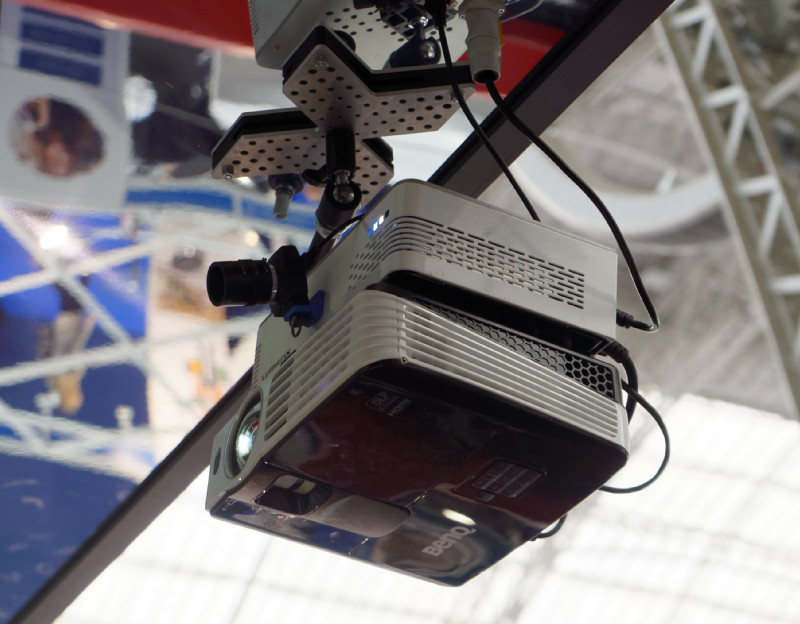 Lumitrix has a mapping system that can be fitted to the projector. Image:Meko
Lumitrix has a mapping system that can be fitted to the projector. Image:Meko
NEC told us that it was showing nothing new from ISE, but I suspect anything new was being saved for next week’s NEC Showcase in London. The company was sharing a booth with an integrator and agency, Pixel Inspiration which makes content for signage, communication and content management. The company was showing how projection could be used to map around shelving and products and integrate with digital signage. There was also a set of shelf-edge LCDs but the company said that the big issue for most stores is getting power to the shelf if you want to use this kind of technology. There’s a big cost to getting power to every shelf.
Panasonic had nothing new in the hardware side and the main promotion was of its ToughPad products for EPOS and for retail use. The company told us that its LinkRay system for transmission of data using light is being used at the Tokyo Big Sight exhibition centre in Japan.
Pioneer is a UK integrator and started by showing us an interactive display system that the company developed for British (but Japanese-influenced) clothing brand, Superdry. The system is already installed and operating in London’s Gatwick airport. There was also an LG 86″ stretch display.
The company was showing the latest Peerless totem design whose design it is enthusiastic about. Like many of the displays on the booth, it was being run on a Chrome-based system as Pioneer is a partner for Google.
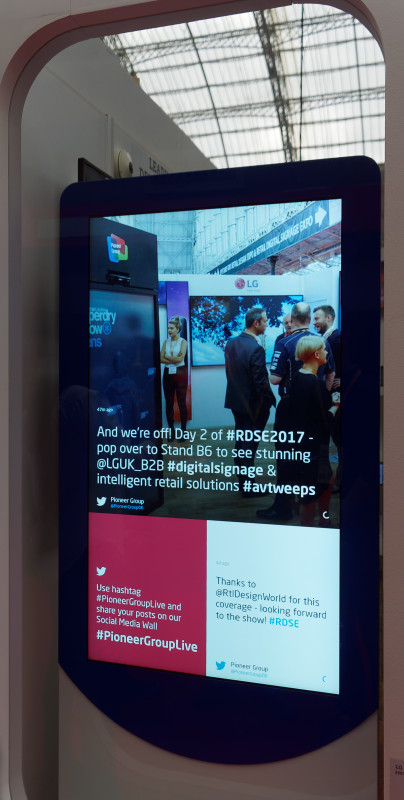 The Peerless totem was shown by partner, Pioneer. Image:Meko
The Peerless totem was shown by partner, Pioneer. Image:Meko
We noticed a display of ESLs and Pioneer told us that it is the exclusive distributor of ESLs from LG Innotek, which are combined with software from TroniTag of Germany to enable complete systems. This is a new deal for the company and it aims to ensure there is integration between labels and digital signage as well as supporting ‘lift and learn’ technologies using NFC. The labels can have multiple pages of data, so on the bigger ones either it can be made possible to show different pages by linking in to systems such as ‘lift & learn’ – alternatively staff can use zappers to access extra data to help with sales.
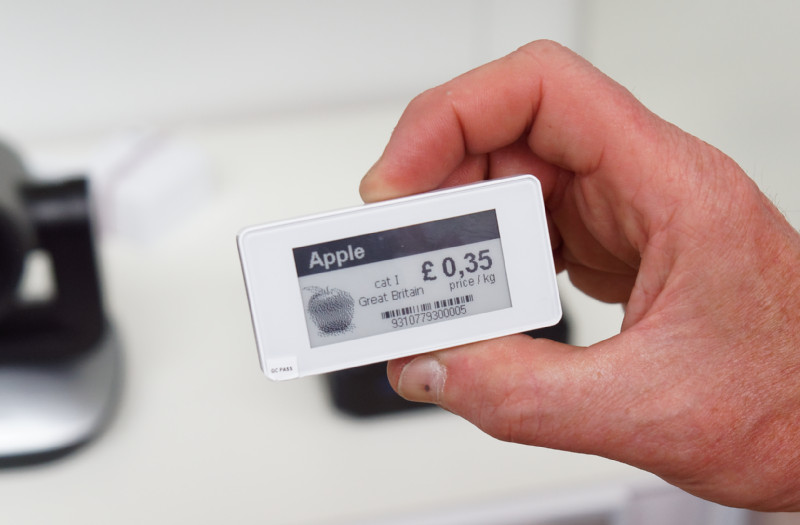 Pioneer is the exclusive UK distributor for LG Innotek’s ESLs – Image:Meko
Pioneer is the exclusive UK distributor for LG Innotek’s ESLs – Image:Meko
Samsung had a dedicated displays booth on the balcony this year, rather than just being part of the main show floor with other Samsung divisions. The company was positive about the response and is pleased to be pushing out LED products now. There were no new products since ISE.
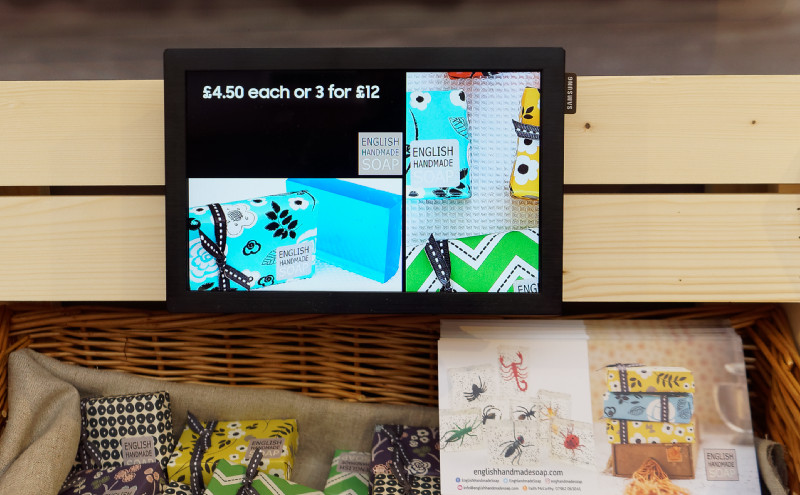 Samsung was showing its small displays as well as larger units. The contrast and anti-glare performance is very good on the company’s displays. Image:Meko
Samsung was showing its small displays as well as larger units. The contrast and anti-glare performance is very good on the company’s displays. Image:Meko

